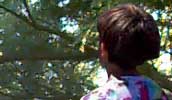
Chief Scientist's Message for Southern Hemisphere Schools

|
|---|
1. GLOBE La Niña Experiment. The strong El Niño that began in 1997 appears to be ending and the circulation pattern in the equatorial Pacific Ocean is shifting from warm to cold. Cold patterns are called La Niña, Spanish for the girl. Our friends at the Climate Prediction Center of the US National Oceanic and Atmospheric Administration have given us an up-dated prediction covering the coming months, and visualizations of their predictions are being made available on the GLOBE Web site. You can again test the accuracy of their predictions by comparing them with your observations of air temperature and precipitation amounts and with historical data on monthly average temperature and monthly total precipitation for your area. The key is to collect GLOBE atmosphere data every day!
What effects did El Niño have on your environment and community? If La Niña is the opposite of El Niño, you might hypothesize that the effects of La Niña will be the opposite. What do you think will happen if the La Niña occurs over the coming months? How can you test your prediction? Please let me know about your research results.
2. GLOBE Phenology Investigation. Is this the adverse season where you live, with some trees having lost their leaves and with virtually all trees dormant? If so, please look at our first GLOBE Special Measurement entitled Phenology located in the Resource Room on the GLOBE Web site. With the protocols provided you can observe when the trees in your area first begin to sprout new foliage and flowers as spring begins. You can correlate the timing of budburst with the weather which has preceded it as measured following GLOBE protocols for air, soil, and water temperatures, precipitation, and soil moisture.
If the environment is warming, scientists expect the growing season to get longer, particularly at middle and high latitudes. By carefully observing the timing of budburst, you can document the length of the growing season in your area. By reporting data following these GLOBE special measurement protocols, you will help confirm, refute, or refine key predictions about the global environment!